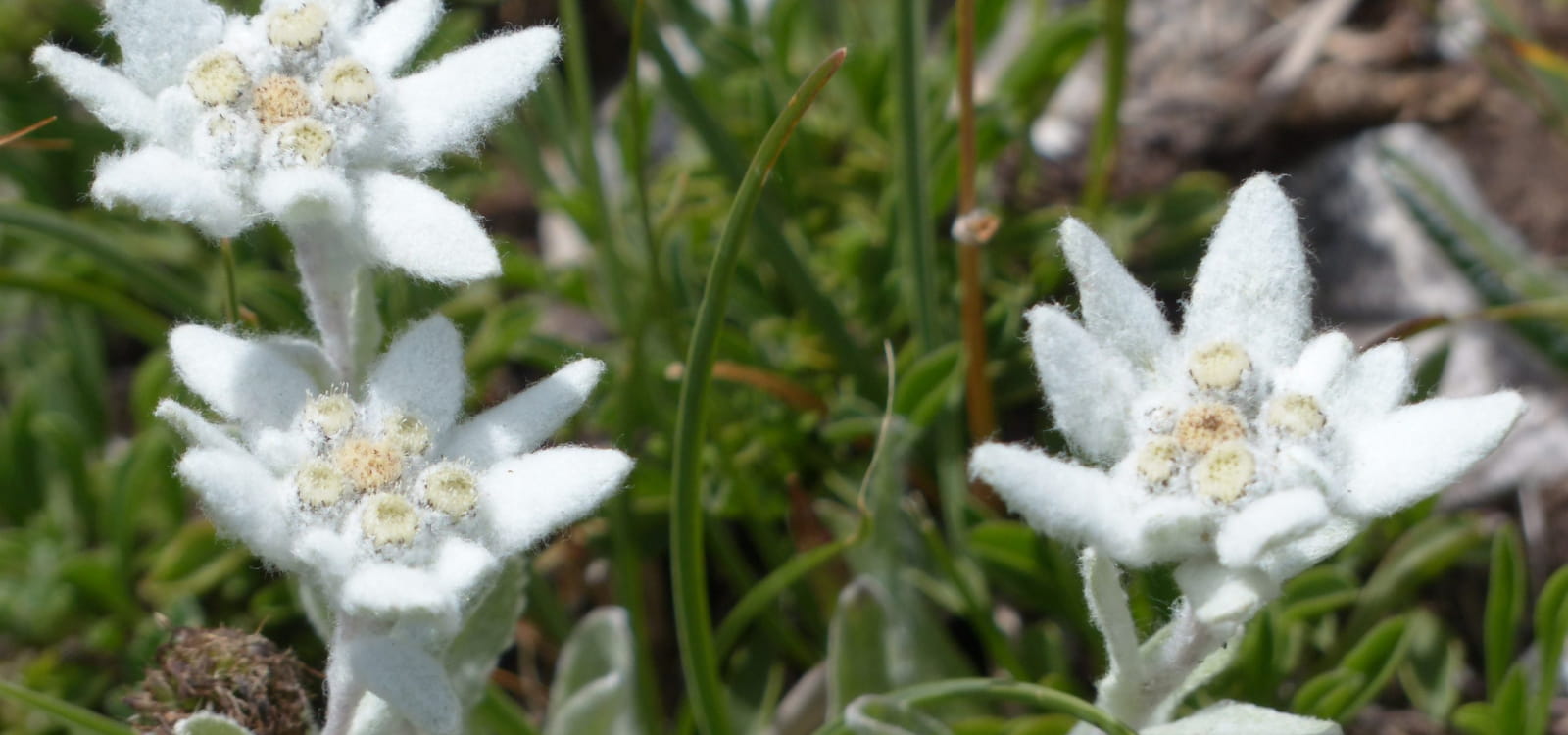20 Nov. 2020
5 good reasons to stay in Coeur de Tarentaise in Winter
Posts

Adding colour and fragrance to the meadows and Alpine pastures, it provides ground cover in the forests andclings to rocky cliff-faces – get to know our local plantlife!

The largest orchid site in Europe, the Lady’s Slipper Orchid, also called the “Virgin’s Slipper”, is characterised byits shoe-like shape and yellow labellum. This spectacular orchid grows between altitudes of 750m and just over 2,000m in the Vanoise massif. Recognised as a significant species in Europe, it is protected in France.
Site: Villarlurin - Le Bois de Champion

Orange lily
Site: Vanoise National Park
The orange lily is an easy-to-recognise perennial that can’t be confused with any other species naturally occurring in Vanoise. The tall stems have large flowers 8 to 15cm in diameter, which are composed of six bright orange tepalsdelicately dotted with black inside.
Site : Parc National de la Vanoise

It’s also called Génépi of the Glaciers or Génépi of the Alps. This little plant measures between 5 and 20cm. Its stem is silky, downy and grey in colour, and its flowers are tiny and yellow.
Very hard to find, Génépi grows exclusively in the Alps, from July to September, between altitudes of 2,000 to 3,000m, mostly in scree and rocks. It’s a protected species and forbidden to pick in the Vanoise National Park. Outside the park, it’s limited to one handful per person.
Since the Middle Ages, Génépi has been used in infusions to soothe digestive problems and colds. Today, we use Génépi to make a liqueur of the same name that is usually drunk as an after-dinner digestif. It can also be useful to help wounds heal and to combat altitude sickness.
Site : La Vanoise National Park

Still known as “star of the glaciers” or “silver star”,edelweiss is the popular symbol of mountain plantlife.
Originally from the Russian steppes, this species colonised Alpine grassesthanks to postglacial global warming. The plant is well adapted to the cold because it’s covered by a white felt layer which allows it to limit water loss.
Edelweiss is a small perennial plant that grows mostly in the Alpine region. More or less xerophilic, it’s fond of stony grassland. It’s illegal to pick in the Vanoise National Park.
Site : La Vanoise National Park

Considered extinct in Alsace, the entire population at present appears to be located in the Vanoise massif. This little gentian is an annual plant. Its branched stem measures between 5 and 25cm in height and bears bright blue flowers.
Sites : La Vanoise National Park and the pastures of Coeur de Tarentaise

Alsoknown as the “Queen of the Alps”.
In many ways, this plant is an emblem of our mountains. It is fond of fertile, cool prairie land above altitudes of 1,500m. It has died out severely due to over-harvesting. Today, this thistle is most at threat from loss of habitat and premature mowing or cattle grazing.
Did you know?
In the right conditions, blue thistles can live for an extraordinarily long time! Over 60 years thanks to the thick root which protects them from the cold of the snow mantle.
Sites : Les Encombres Valley / Saint-Martin-de-Belleville

It looks like little dandelion with heart-shaped, downy leaves often tinted with purple. Its long, many-branched stems take hold in several different sites, allowing it to colonise very fine, unstable scree, between altitudes of 1,500 and 3,000m. In the Savoie region, the pygmy hawksbeard grows in five communes: Saint-Martin-de-Belleville, Valloire, Pralognan-la-Vanoise, Saint-Bon-Courchevel and Les Allues. It is featured on the Savoyard red list (list of endangered species) of plant species classified as “endangered.”
Site: Les Encombres Valley / Saint-Martin-de-Belleville

Swertia Perennis
Part of the Gentian family, this plant is quite rare in Vanoise but still grows across the Belleville Valley. It’s a fan of limestone wetlands (wetland meadows and marshes). Considered at risk of extinction, it has been classified as a protected species in Auvergne Rhône Alpes.
These star-shaped purplish-blue flowers dotted with black bloom in great number between July and September.
Site: Les Encombres Valley / Saint Martin de Belleville
Artificial lake wetlands / Saint-Martin-de-Belleville

With its white tassel formed of a few frizzy threads extending the end of its slender stem, the Alpine Bulrush has long been assimilated into the cotton grass family,which it closely resembles. Dependent on wetlands and marshlands, it lives in semi-aquatic habitats (around the edges of ponds or waterways). Like many species found in northern and arctic regions and present in our latitude’s cold wetlands, this bulrush is a vestige of the last ice-age.
Rare and protected in the Rhône-Alpes, it’s only found in twenty Savoie communes such asBozel, Saint-Martin-de-Belleville, Champagny-la-Vanoise, etc.
Sites: Les Encombres Valley / Saint-Martin-de-Belleville